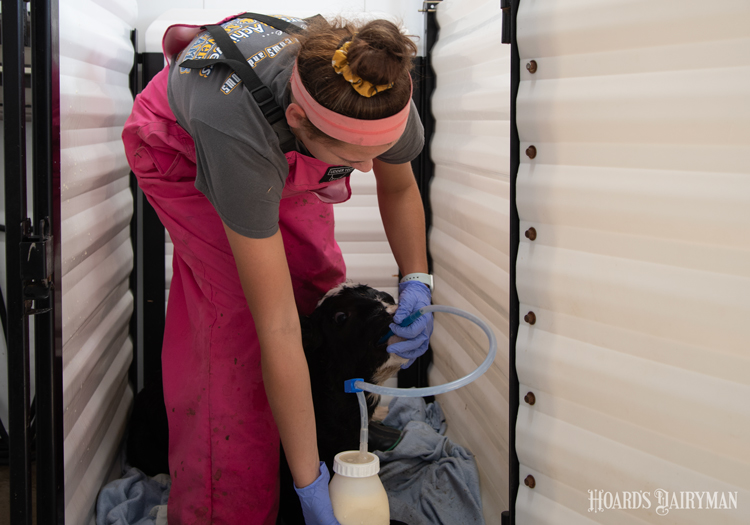
Colostrum, more than anything else, influences calf health and survival prior to weaning, said Sabine Mann during a Cornell Cooperative Extension webinar. It is what allows the body — which we cannot forget is fragile even if it boasts a 90-pound frame — to get used to life outside of the womb.
About one-third of calves experience a preweaning health disorder, and the U.S. averages approximately a 5% preweaned mortality rate, Mann noted. That means there is still room to improve in setting calves up for success, which starts with good colostrum practices.
How do we use colostrum effectively? Mann, an associate professor at Cornell’s College of Veterinary Medicine, provided a reminder of the “Five Qs” of colostrum management.
Quality: Knowing if you are feeding high enough quality colostrum is a good place to start, and this is measured in the level of antibodies. Digital or handheld Brix refractometers are a valuable tool to indirectly determine if the colostrum you have is sufficient. “Keep in mind, most refractometers need to be calibrated before you use it,” Mann added. She advised calibrating every day. Check your machine’s instructions, but distilled water can often be used. It’s also a good practice to keep it clean so the readings are as accurate as possible.
Squeaky clean: Part of having high-quality colostrum is to keep it free of bacterial contamination. First, Mann described research that showed most colostrum contamination does not come from the cow but from the buckets and milkers used at harvest. This means we need to wash and sanitize that milking equipment just like we do all milking equipment, she said.
Use colostrum within a day of harvest when possible. If it must be refrigerated or frozen, store it in individual containers and label it with the date and Brix reading, Mann continued. Bacteria can survive in a refrigerator or freezer, so it’s important to still handle them appropriately. Remember that refrigeration is for short-term storage, while freezing can offer six to 12 months of shelf life, she said. When thawing, remove only as much as you need at a time. She advised using a water bath no higher than 45°F to 60°F, and remember that the longer the colostrum is at a high temperature, the higher the chance that its valuable antibodies can be denatured.
Mann also noted that heat treatment of colostrum does not create a sterile product; on average, bacteria loads are reduced 93%. This means we cannot rely on heat treatment to solve colostrum with a high bacterial count to begin with. Further, exposing colostrum to high heat for the hour or so heat treatment takes can be dangerous for bacterial growth if it is not quickly cooled back down with ice. Don’t defeat the purpose of your heat treatment process, Man urged.
Quantity: Mann and her team are studying more about the value of the size of a colostrum feeding. Providing 8.5% of a calf’s body weight may be better than 10%, she said, because too much may not allow the calf to take up the antibodies appropriately.
Quickness: There are no questions, though, about the timing of colostrum delivery. Calves will achieve the highest immunity uptake in the first one to four hours of life. Once the gut sees colostrum, it will accelerate closing, Mann said. That doesn’t tell us to delay the feeding, but it does offer a little bit of leeway in timing. A second feeding a few hours later may also be beneficial because of the prolonged local effects in the gut that colostrum has, such as internal growth factors and nutrients, she continued.
Quantify failure of passive transfer: Finally, Mann encouraged farms to quantify passive transfer success to evaluate their colostrum program success. New guidelines released a few years ago based on the most recent National Animal Health Monitoring Service data outlines four categories of passive transfer rather than one “yes” or “no” cutoff. Digging into this data can provide more details on how your calves are being set up for their next stage.








